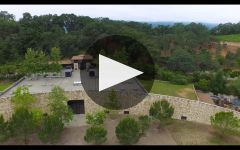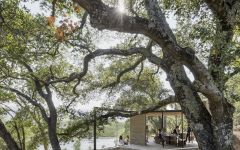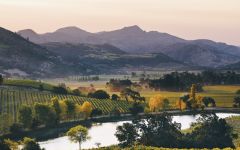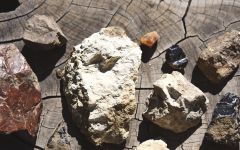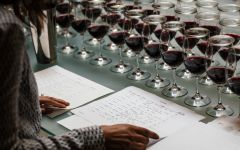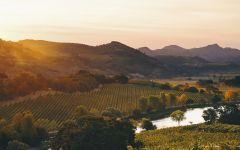Quintessa 2021
-
Wine
Enthusiast -
James
Suckling -
Jeb
Dunnuck -
Robert
Parker -
Wine
Spectator
Top 100 of 2024
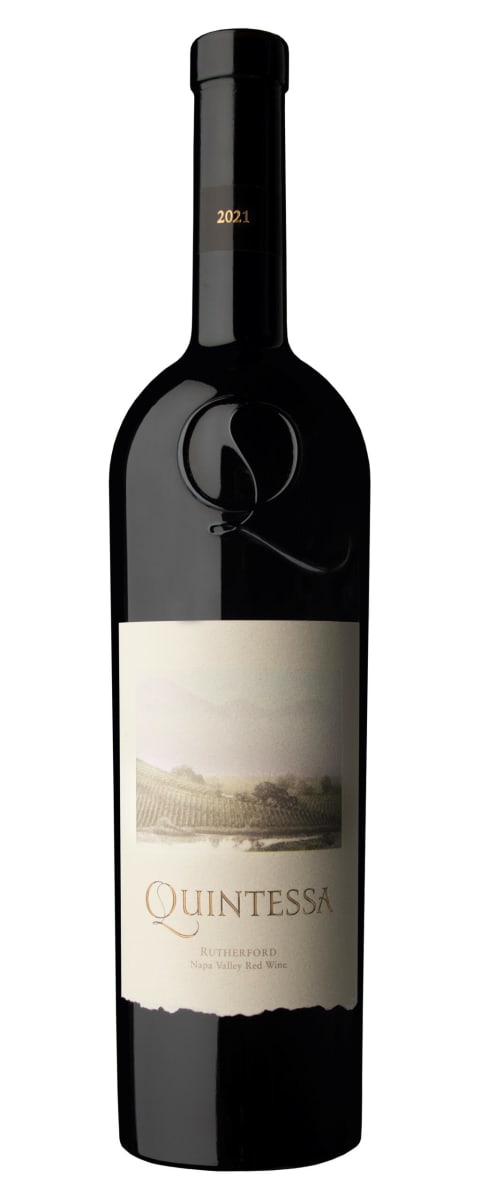


Product Details
Your Rating
Somm Note
Winemaker Notes
The 2021 unfolds with Quintessa's signature balance of complex fruit, precise structure, and vital freshness amplified by an especially beautiful growing season. Floral notes— violet and lilac—lift an intensely aromatic bouquet of cassis and black cherry accented with anise, bay laurel, and forest floor. On the palate, firm but fine-grained tannins back dark berry and savory herb flavors interwoven with graphite and iron. Generous texture carries the complex layers to a fine, chalky finish.
Blend: 91% Cabernet Sauvignon, 4% Cabernet Franc, 3% Carménère, 1% Merlot, 1% Petit Verdot
Professional Ratings
-
Wine Enthusiast
An exquisite wine, relying primarily on Cabernet Sauvignon from a single estate. Aromas of lavender, dried herbs and grapefruit pith combine with flavors of firm fruits and cocoa on a structure of abundant, powder-fine tannin and a mouthwatering finish. This wine is refined, detailed and delicious, with as much elegance as energy. Best 2026–2040.
Cellar Selection -
James Suckling
So much graphite and volcanic character on the nose with metal shavings and gunpowder. Black ink, iron and rust, too. Blackberry and blackcurrant undertones. Full-bodied but not overpowering, with chewy and juicy tannins that are long and very subtle. Superb finish. From biodynamic grapes with Demeter certification.
-
Jeb Dunnuck
Lastly, the 2021 Proprietary Red was just bottled in July of this year and checks in as 91% Cabernet Sauvignon, 4% Cabernet Franc, 3% Carmenere, and the rest Petit Verdot and Merlot, brought up in 64% new French oak. It offers pure blue fruits, spring flowers, violets, and spicy oak, with a beautiful chalky, mineral note that comes through more on the palate. It's elegant, full-bodied, has ultra-fine tannins, good acidity, and terrific length. It's another gorgeous wine that will evolve for 15+ years.
-
Robert Parker's Wine Advocate
Marked by scents of cherries and raspberries, with just the barest hints of cedar and mocha-tinged oak, Quintessa's fruit-forward 2021 Proprietary Red Wine is wonderfully smooth and supple in the mouth. It's medium to full-bodied, suave and silky, all class and elegance, without any sense of excessive bulk or rusticity. If one were to have a complaint about it (hardly likely), it's that it comes across as almost too polished, too elegant, too easy to drink.
-
Wine Spectator
This sports a fresh-edged beam of mulberry, black currant and boysenberry fruit, while flashes of hibiscus and violet fill in throughout alongside singed apple wood and iron notes. Shows the vintage's combo of dense fruit and racy-edged structure, with nice tension. Cabernet Sauvignon, Cabernet Franc, Carmenère, Petit Verdot and Merlot. Best from 2025 through 2038.
Other Vintages
2020- Decanter
-
James
Suckling -
Jeb
Dunnuck
-
Wine
Enthusiast -
James
Suckling -
Jeb
Dunnuck - Decanter
-
Robert
Parker -
Wine
Spectator
-
James
Suckling -
Wine
Enthusiast -
Robert
Parker -
Wine
Spectator
-
Robert
Parker -
James
Suckling -
Wilfred
Wong - Decanter
-
Wine
Spectator
-
James
Suckling -
Jeb
Dunnuck -
Robert
Parker - Decanter
-
Wine
Spectator -
Wilfred
Wong
-
James
Suckling -
Robert
Parker -
Wine &
Spirits
-
James
Suckling -
Robert
Parker
-
James
Suckling -
Robert
Parker - Decanter
-
James
Suckling -
Robert
Parker -
Wine
Spectator
-
Wilfred
Wong -
James
Suckling -
Wine
Enthusiast -
Connoisseurs'
Guide
- Decanter
-
Robert
Parker -
Wine &
Spirits -
Wine
Spectator
-
Connoisseurs'
Guide
-
Connoisseurs'
Guide -
Wine
Enthusiast -
Wine
Spectator -
Robert
Parker
-
Wine
Enthusiast -
Wilfred
Wong -
Wine &
Spirits
-
Connoisseurs'
Guide
-
Connoisseurs'
Guide -
Wine
Enthusiast -
Wine &
Spirits -
Wilfred
Wong
-
Wine
Enthusiast
-
Wine
Enthusiast -
Robert
Parker -
Wine &
Spirits
-
Wine
Spectator -
Wine
Enthusiast -
Wine &
Spirits
-
Wine
Enthusiast -
Wine
Spectator
-
Wine
Spectator -
Wine
Enthusiast
-
Wine
Spectator

A noble variety bestowed with both power and concentration, Cabernet Sauvignon enjoys success all over the globe, its best examples showing potential to age beautifully for decades. Cabernet Sauvignon flourishes in Bordeaux's Medoc where it is often blended with Merlot and smaller amounts of some combination of Cabernet Franc, Malbecand Petit Verdot. In the Napa Valley, ‘Cab’ is responsible for some of the world’s most prestigious, age-worthy and sought-after “cult” wines. Somm Secret—DNA profiling in 1997 revealed that Cabernet Sauvignon was born from a spontaneous crossing of Cabernet Franc and Sauvignon Blanc in 17th century southwest France.

The Rutherford sub-region of Napa Valley centers on the town of Rutherford and covers some of Napa Valley’s finest vineyard real estate, spanning from the Mayacamas in the west, to the Vaca Mountains on the other side of the valley.
Inside of the Rutherford AVA, bordering the Mayacamas, is a stretch of uplands called the Rutherford Bench. (These bench lands technically run the length of Oakville as well). Mountain runoff creates deep, well-drained, alluvial soils on the bench, giving vine roots plenty of reason to permeate deep into the ground. The result is wine with great structure and complexity.
Rutherford Cabernet Sauvingons and Bordeaux Blends garner substantial attention for their enticing fragrances of dusty earth and dried herbs, broad and juicy mid-palates and lush and fine-grained tannins. The sub-appellation claims some of the valley’s most prized vineyards today, namely Caymus, Rubicon and Beckstoffer Georges III.
It is also home to Napa’s most influential and historic personalities. Thomas Rutherford, responsible for the appellation's name, made serious investments here in grape growing and wine production between the years of 1850 to 1880. Gustave Niebaum purchased a large swath of land and completed his winery in 1887, calling it “Inglenook.” Today this remains the oldest bonded winery in California. Georges Latour founded Beaulieu Vineyard in 1900, making it the oldest continuous winery in the state. Latour also hired the famous enologist, André Tchelistcheff, a man credited for single-handedly defining the modern Napa winemaking style.


